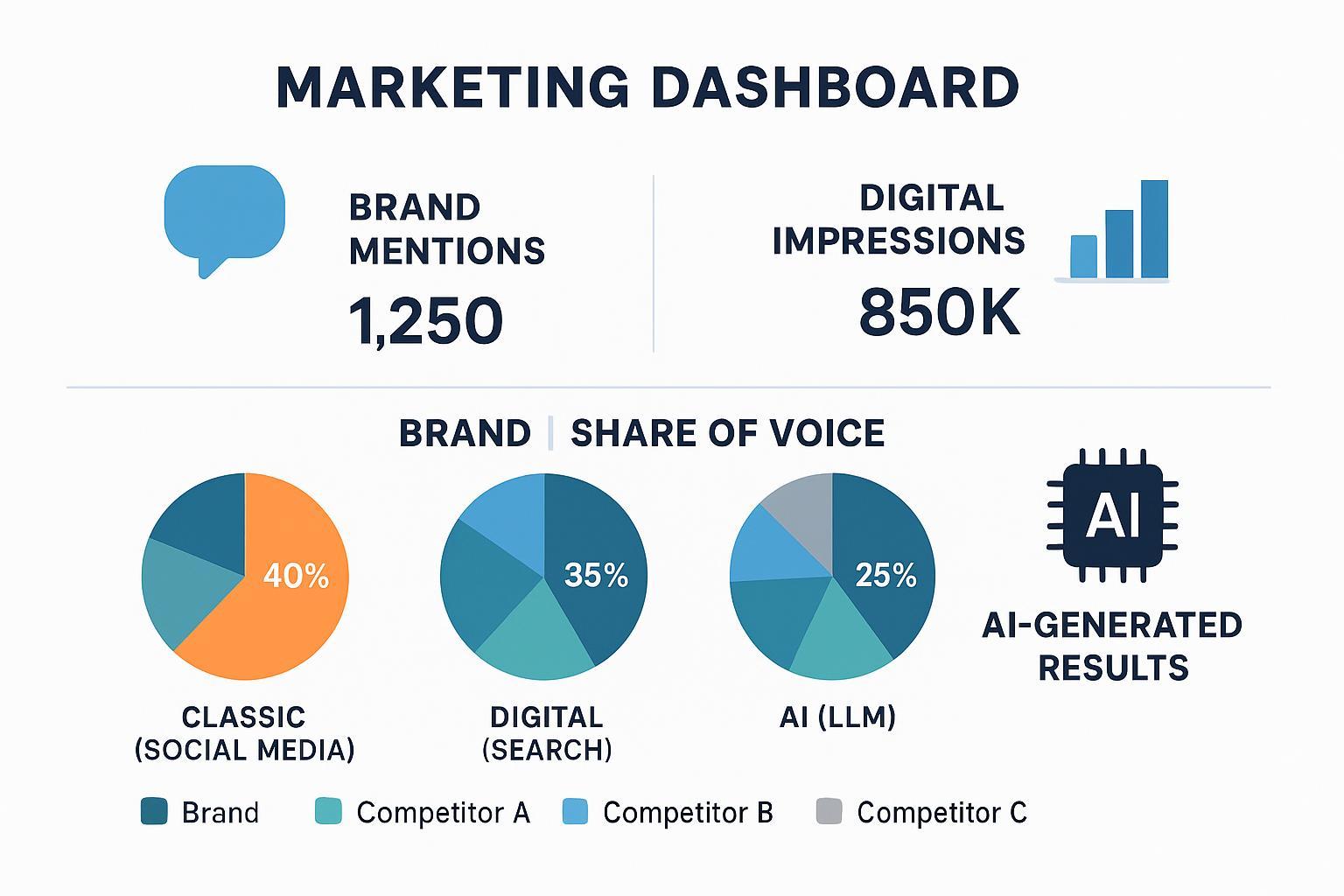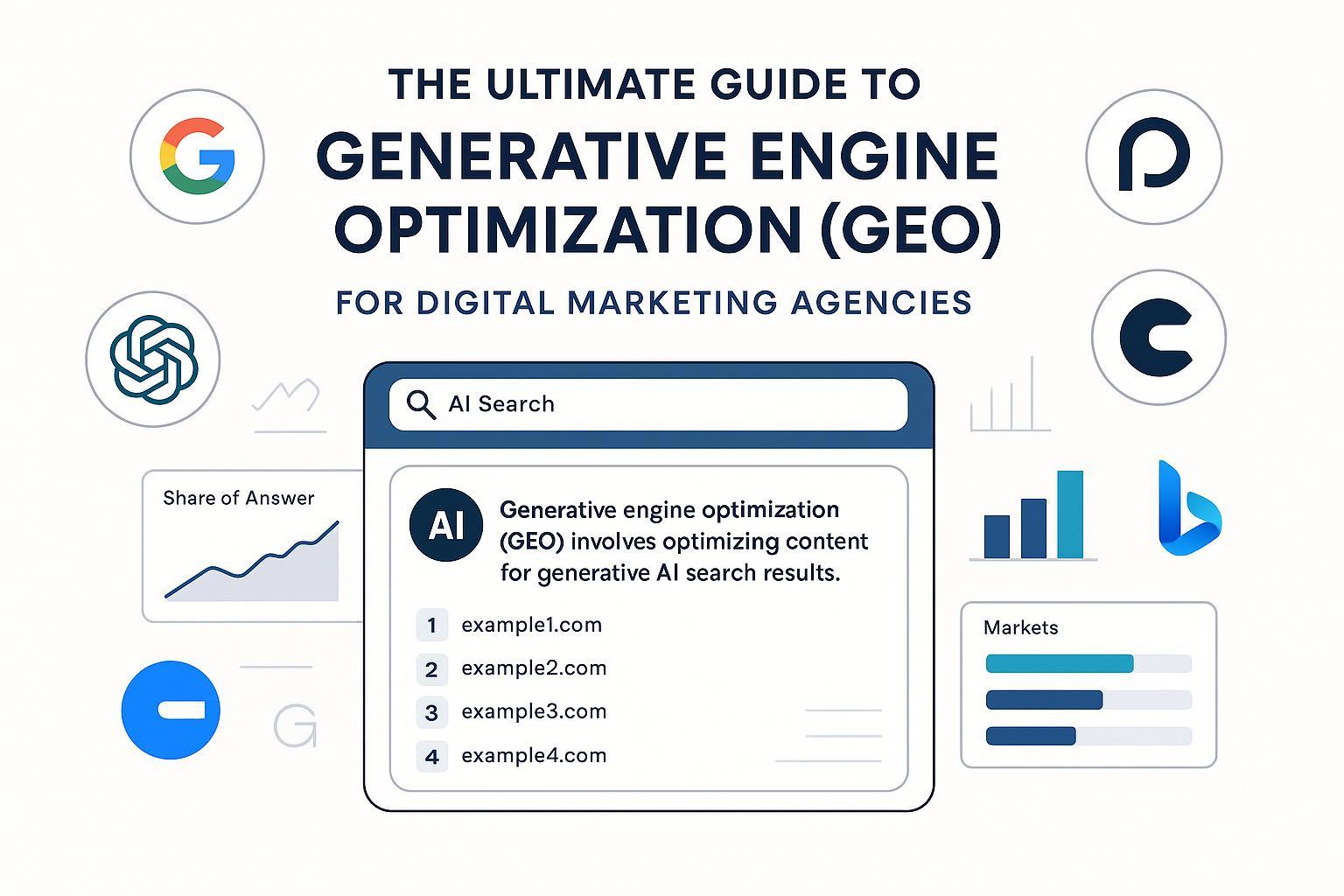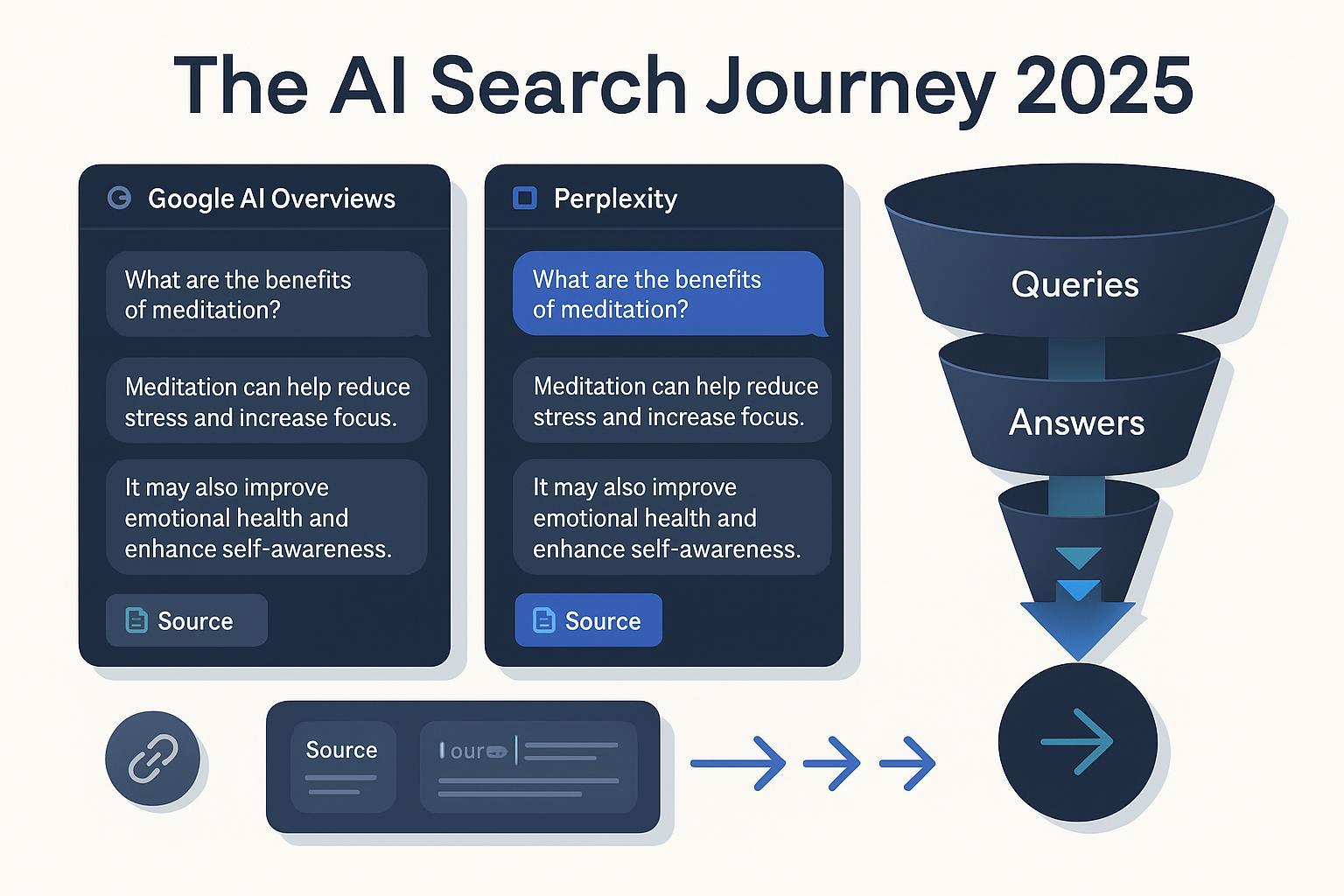What Is Share of Voice (SOV)? Definition, Marketing & AI Context
Share of Voice (SOV) explained: discover its definition, modern use in marketing and AI search, calculation methods, and key differences vs impression share.


Share of Voice (SOV) measures a brand’s proportion of market presence or conversation compared to competitors across traditional, digital, and AI-powered channels.
Understanding Share of Voice: Classic and AI-Driven Definitions
At its core, SOV quantifies how much a brand is talked about—or seen—relative to competitors within a specific channel or across the entire market. Traditionally, this encompassed advertising spend, media mentions, and social chatter. Today, the scope has broadened to include organic search visibility and, crucially, a brand’s representation in AI-generated search results (like those from ChatGPT or Google Gemini).
Authoritative marketing sources like Sprout Social and Talkwalker reinforce that SOV serves as both a visibility and influence barometer, reflecting not just presence but potential to drive perception and market action.
Key Components of SOV
- Metric Focus: Can include ad spend, mentions, impressions, search visibility, or AI/LLM answer frequencies—depending on channel.
- Calculation: The universal formula is (Brand Metric ÷ Total Market Metric) × 100. In AI, this might mean: (Your brand’s mentions in LLM responses ÷ Total market mentions) × 100.
- Channel Flexibility: Paid media, organic SEO, social, PR, and now AI/LLM search ecosystems.
- Dynamic Measurement: Requires regular monitoring due to shifting trends and competitive moves.
Practical Application Scenarios
- Traditional SOV: An FMCG brand tracks its campaign’s increase in social mentions and paid impression share, benchmarking these against rival campaigns.
- AI/LLM SOV: A technology company monitors how often its flagship products are referenced in ChatGPT or Gemini responses on key search queries, uncovering competitive shifts when a rival’s new product launch briefly dominates AI answers.
- Crisis Response: A brand notes a spike in negative mentions after a PR incident—SOV rises, but sentiment analysis warns that visibility isn’t always positive, prompting rapid reputation management.
Best Practice: Combine SOV insights with sentiment analysis and actionable benchmarks to shape digital ad spend, content strategy, and public relations responses.
Comparison Table: SOV vs. Related Metrics
| Metric | What It Measures | Channel | Example Use Case |
|---|---|---|---|
| Share of Voice | Brand presence/mentions vs. competitors | Any (paid, organic, AI) | Track total industry conversation |
| Impression Share | Eligible ad impressions captured | PPC, Paid Search | Optimize ad bidding, campaign reach |
| Market Share | % of sales revenue vs. market total | Sales, Revenue | Business performance analysis |
| Share of Search | Organic search visibility vs. competitors | SEO, Search Engines | Organic search brand strength |
Source: Sprout Social SOV Guide
Distinguishing Features in AI/LLM Contexts
- Prompt Sensitivity: SOV on AI platforms can fluctuate with prompt wording, LLM model updates, and algorithmic changes.
- New Challenges: "Hallucinated" or false mentions and lack of transparent query logs complicate monitoring.
- Ongoing Evolution: As AI-driven search and content recommendations grow, SOV calculation methods and strategic benchmarks are continuously evolving.
Related Concepts
- Impression Share: Proportion of total possible impressions captured in PPC/ad channels. Learn more.
- Market Share: Percentage of sales in a market held by a brand—distinct from conversational or search visibility.
- Share of Search: Brand’s dominance in organic search visibility for key queries.
- Brand Awareness and Sentiment Analysis: Qualitative complements for true SOV meaning and impact.
Key Takeaways
- SOV remains a critical, actionable metric for brand marketers and digital strategists—now extending well beyond classic ads to encompass search, social, and AI-generated exposure.
- Measurement requires clarity on channel, metric selected, and regular review—especially as AI/LLM search and generative platforms reshape brand visibility.
For deeper reading, see the Sprout Social SOV Insight and the Talkwalker Guide.





